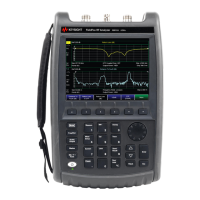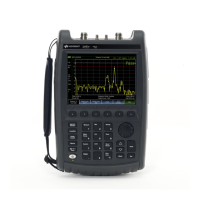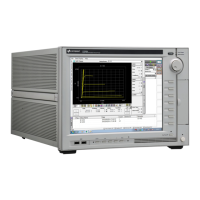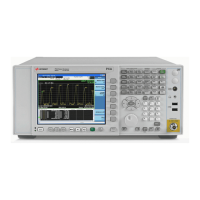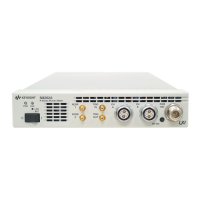64 Keysight N9927-90001 User’s Guide
DTF (Distance to Fault) Measurements
DTF Measurement Settings
— Bandpass (Default setting) The frequency range of a DTF
measurement is set manually. Use Bandpass mode when the DUT
contains a diplexer or other filtering device which does not pass
some frequencies.
Typically, you will set the frequency range of the measurement to the passband
of the filter. However, you may also want to test the ability of the filter to reject
unwanted frequencies. In this case, set the frequency range to include those
frequencies which the filter may not be adequately rejecting.
How to manually set Frequencies in Bandpass Mode
—Press Freq/Dist
—Then Min Start Freq
and type the start frequency to use for the DTF
measurement.
—Then Max Stop Freq
and type the stop frequency to use for the DTF
measurement.
—OR
—Press More
—Then Max Freq Span and type the frequency range to use for the DTF
measurement.
—Then Center Frequency
and type the center frequency of the range to use
for the DTF measurement.
When the DTF frequencies are set manually, they may not be the optimum
frequencies for measuring the distance to fault. The distance may no longer be
alias-free. Learn more about alias-free range on page 69.
These settings specify the minimum and maximum frequencies to be used for
the DTF measurement. These exact frequencies may not be used, but a
narrower frequency range may be used that will still pass through the
bandpass filter.
Coupled Frequency
When a Return Loss & DTF measurement is present, this setting allows you to
have different frequency ranges for each measurement. Learn more in
“Coupled Frequency” on page 54.

